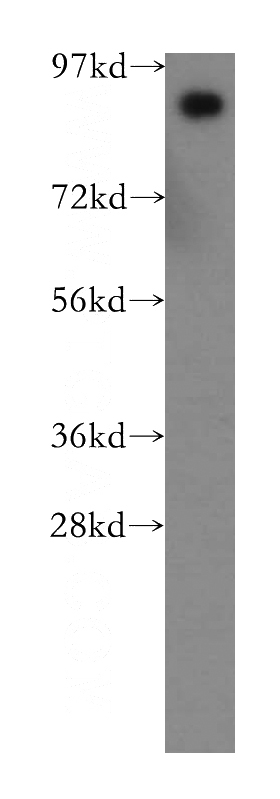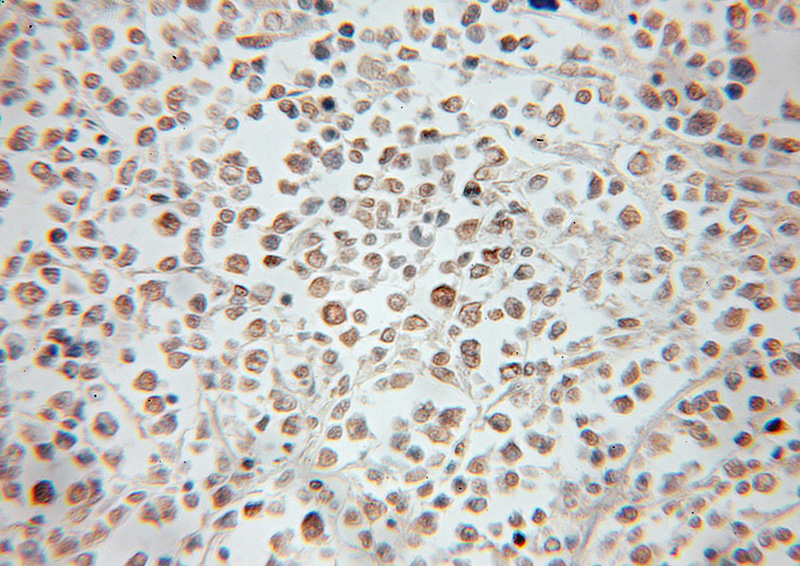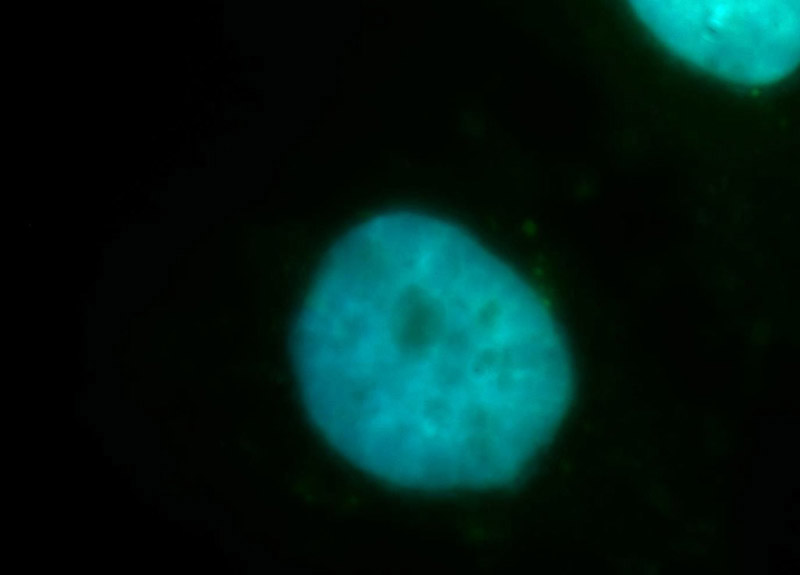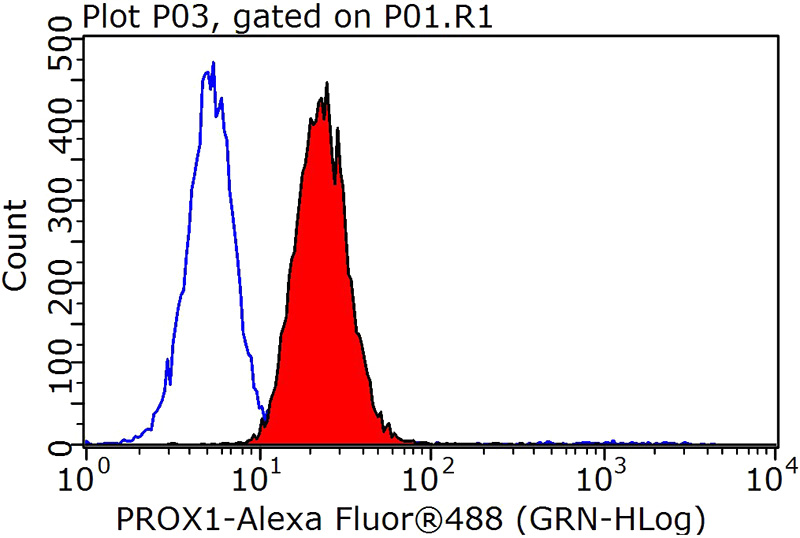-
Product Name
PROX1 antibody
- Documents
-
Description
PROX1 Rabbit Polyclonal antibody. Positive WB detected in human liver tissue, HepG2 cells, MCF7 cells, mouse pancreas tissue. Positive FC detected in HepG2 cells. Positive IHC detected in human lymphoma tissue. Positive IF detected in HepG2 cells. Observed molecular weight by Western-blot: 90 kDa
-
Tested applications
ELISA, IHC, IF, FC, WB
-
Species reactivity
Human,Mouse,Rat; other species not tested.
-
Alternative names
prospero homeobox 1 antibody; Prospero homeobox protein 1 antibody; PROX 1 antibody; PROX1 antibody
-
Isotype
Rabbit IgG
-
Preparation
This antibody was obtained by immunization of PROX1 recombinant protein (Accession Number: XM_047425575). Purification method: Antigen affinity purified.
-
Clonality
Polyclonal
-
Formulation
PBS with 0.1% sodium azide and 50% glycerol pH 7.3.
-
Storage instructions
Store at -20℃. DO NOT ALIQUOT
-
Applications
Recommended Dilution:
WB: 1:200-1:2000
IHC: 1:20-1:200
IF: 1:20-1:200
-
Validations

human liver tissue were subjected to SDS PAGE followed by western blot with Catalog No:114224(PROX1 antibody) at dilution of 1:500

Immunohistochemical of paraffin-embedded human lymphoma using Catalog No:114224(PROX1 antibody) at dilution of 1:50 (under 10x lens)

Immunofluorescent analysis of HepG2 cells, using PROX1 antibody Catalog No:114224 at 1:100 dilution and FITC-labeled donkey anti-rabbit IgG(green). Blue pseudocolor = DAPI (fluorescent DNA dye).

1X10^6 HepG2 cells were stained with 0.2ug PROX1 antibody (Catalog No:114224, red) and control antibody (blue). Fixed with 90% MeOH blocked with 3% BSA (30 min). Alexa Fluor 488-congugated AffiniPure Goat Anti-Rabbit IgG(H+L) with dilution 1:1000.
-
Background
PROX1, Prospero homeobox protein 1, belongs to the Prospero homeobox family and contain a Prospero-type homeobox DNA-binding domain. PROX1 plays a fundamental role in early development of CNS and regulated the expression of gene and development of postmitotic undifferentiated young neuron. Also PROX1 is a specific and required regulator of the development of the lymphatic system. This is a rabbit polyclonal antibody raised against part of C-terminal chain of human PROX1.
-
References
- Liu Y, Zhang JB, Qin Y. PROX1 promotes hepatocellular carcinoma metastasis by way of up-regulating hypoxia-inducible factor 1α expression and protein stability. Hepatology (Baltimore, Md.). 58(2):692-705. 2013.
- Srinivasan RS, Escobedo N, Yang Y. The Prox1-Vegfr3 feedback loop maintains the identity and the number of lymphatic endothelial cell progenitors. Genes & development. 28(19):2175-87. 2014.
- Cho E, Kim DH, Hur YN. Cyclin Y inhibits plasticity-induced AMPA receptor exocytosis and LTP. Scientific reports. 5:12624. 2015.
- Cai X, Zhang W, Chen G, Li RF, Sun YF, Zhao YF. Mesenchymal status of lymphatic endothelial cell: enlightening treatment of lymphatic malformation. International journal of clinical and experimental medicine. 8(8):12239-51. 2015.
Related Products / Services
Please note: All products are "FOR RESEARCH USE ONLY AND ARE NOT INTENDED FOR DIAGNOSTIC OR THERAPEUTIC USE"
